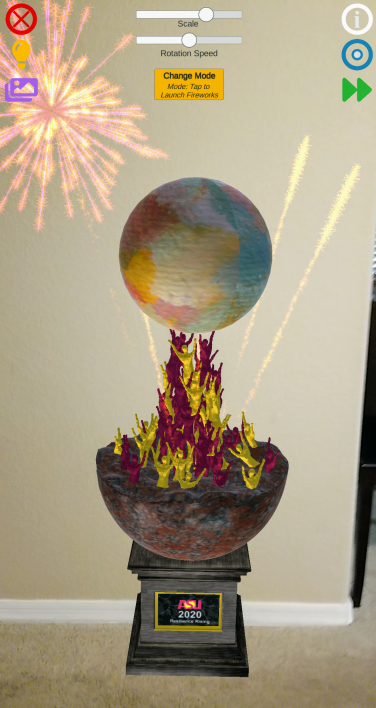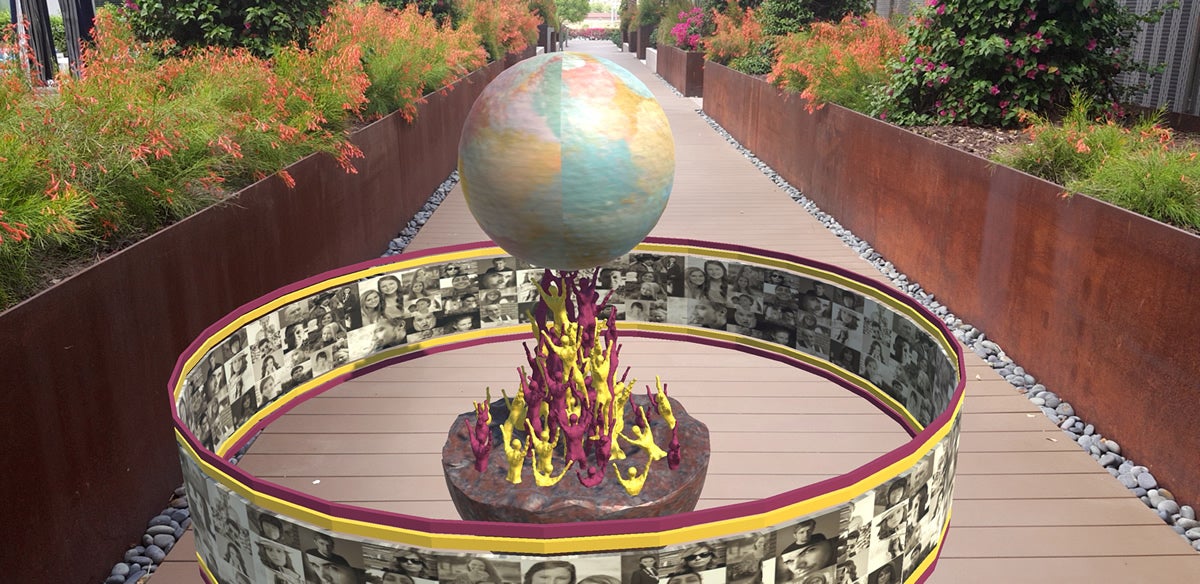Paying tribute to resilience

An original, augmented reality art sculpture was created to pay tribute to the resilience of the Class of 2020.
Arizona State University's Class of 2020 knows what it means to be resilient.
They’ve had to adapt to unique circumstances, and they’ve risen to the challenge. They moved to fully remote learning in mid-March due to the COVID-19 pandemic. They’ve navigated fears and anxiety from the global health crisis while socially distant, and their graduation ceremonies were virtual.
An original, augmented reality art sculpture is now paying tribute to those experiences.
“We are in this together," said Diana Ayton-Shenker, ASU-Leonardo Initiative executive director. "We wanted to honor the experiences and sacrifices everyone has gone through, and the incredible adaptability and resourcefulness to create something new.”
ASU Resilience Rising is a collaboration between the School for the Future of Innovation in Society, ASU-Leonardo, Meteor Studio and Herberger Institute for Design and the Arts visiting artist William T. Ayton.
“I've done many images depicting the world in many different ways,” Ayton said. “I did a drawing back in 1991 in response to the AIDS epidemic, which showed a ruined world held up by two hands as it fell apart. This (Resilience Rising) artwork is intended to be the opposite of that, with humanity coming together to create a new and better world.”
Rising Resilience app.
The project features figures rising out of a broken globe and creating a new one together. It is then placed virtually in your physical environment through a free app. You can change the size of the piece and the lighting, and even set off fireworks.
Robert LiKamWa, director of Meteor Studio and assistant professor in the School of Arts, Media and Engineering and the School of Electrical, Computer and Energy Engineering, helped bring the project to life. He and his students used the software program Unity to create the AR piece.
“I thought it was a very beautiful idea,” LiKamWa said. “It was a way to share stories of resilience and inspiration, and show how we're able to connect with each other in these strange times that we're in.”
The goal is to create a long-term AR piece on the Tempe campus featuring a digital “COVID Quilt.” Students can contribute their stories of resilience to the quilt, which would surround viewers in the immersive experience.
“I hope that people will use it for cathartic healing,” Ayton-Shenker said. “It would be a place you could go and feel the pain and the recovery of this experience.”
Mockup of statue with "COVID Quilt."
The digital art piece is a way to show how people come together during a crisis and respond with resilience.
“It’s a love letter to our students, each other and ourselves,” Ayton-Shenker said. “With commitment, collaboration and imagination, we can use art, science and technology to carry us through something that really humanizes us. We can make ourselves more human and more humane when we share a story of resilience.”
The ASU Resilience Rising tribute is now available from the Google Play Store and Apple App Store.
More Science and technology

Hack like you 'meme' it
What do pepperoni pizza, cat memes and an online dojo have in common?It turns out, these are all essential elements of a great…

ASU professor breeds new tomato variety, the 'Desert Dew'
In an era defined by climate volatility and resource scarcity, researchers are developing crops that can survive — and thrive —…

Science meets play: ASU researcher makes developmental science hands-on for families
On a Friday morning at the Edna Vihel Arts Center in Tempe, toddlers dip paint brushes into bright colors, decorating paper…



